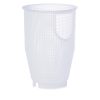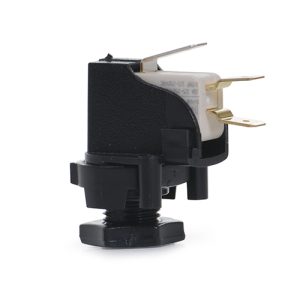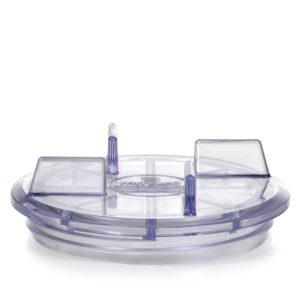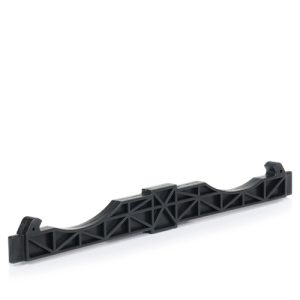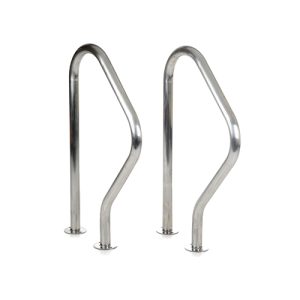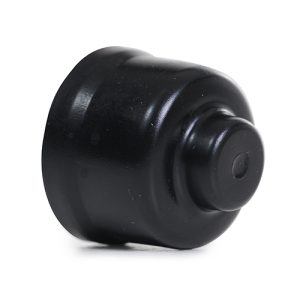Aquamite Pump Body
£140.90 Inc VAT
Out of stock
Want to be notified when this product is back in stock?
Aquamite Pump Body
Complete Wet End Housing for Pump Rebuilds
As a retailer of pool and spa parts, I stock this replacement pump body for Aquamite pumps. This main housing component forms the hydraulic heart of your pump, containing all the water-handling components and providing the structural foundation for the entire pump assembly.
What is a Pump Body?
The pump body (also called the wet end or pump housing) is the large plastic housing that contains the strainer basket, impeller, diffuser, and associated components. It features the suction and discharge ports where plumbing connects, an opening at the top for the strainer lid, and mounting points for attaching the motor assembly.
This single-piece molded component creates the sealed chamber where water circulates. Its internal passages are precisely designed to optimize water flow from the suction port through the impeller area and out the discharge port with minimal turbulence or energy loss.
Made from durable, chemical-resistant plastic, the pump body must withstand constant exposure to pool chemicals, pressure fluctuations, temperature variations, and physical stress from water flow and mounting forces.
Functions of the Pump Body
The pump body provides the structural housing that contains and supports all wet end components. The strainer basket sits in its chamber, the impeller spins within its volute, and the diffuser mounts in its designated recess. Without the body, these components cannot function as a cohesive system.
It creates the sealed pressure vessel necessary for pump operation. Water under pressure from the spinning impeller must be contained and directed—the pump body’s walls and passages channel this pressurized water efficiently toward the discharge port.
The body provides the interface between the hydraulic components and the motor. The rear of the housing includes mounting points where the seal plate and motor assembly bolt on, creating the complete pump while maintaining separation between the wet and dry ends.
Suction and discharge ports molded into the body allow plumbing connections. These ports are precisely sized and positioned for optimal hydraulic performance and convenient installation in typical equipment configurations.
Signs Your Pump Body Needs Replacement
Cracks in the body housing indicate structural failure requiring replacement. Even hairline cracks compromise the pressure vessel, causing leaks and air infiltration that prevent proper pump operation. Cracks typically develop around mounting bolt holes, suction/discharge ports, or in areas stressed by over-tightening.
Persistent leaks that cannot be resolved by replacing gaskets or seals suggest body damage. If water seeps from the housing walls, threaded ports have stripped threads, or mounting surfaces are warped, the body itself has failed.
Warping from heat exposure or improper installation prevents proper sealing between components. A warped body won’t seal properly against the motor mounting plate, causing air leaks and potential water intrusion toward the motor.
Broken mounting bosses or stripped threads in port connections mean the body cannot be properly assembled or connected to plumbing. While some thread damage can be repaired, extensive damage warrants complete body replacement.
Chemical damage manifesting as surface degradation, brittleness, or discoloration throughout the plastic indicates the material has been compromised. Severely degraded bodies become fragile and prone to sudden failure.
Common Causes of Pump Body Damage
Freeze damage is extremely common in areas with cold winters. Water trapped in the body expands when frozen, cracking the plastic walls. Proper winterization—draining all water and removing drain plugs—prevents this expensive damage.
Over-tightening mounting bolts, union connections, or port fittings cracks the plastic around these stress points. Plastic housings have specific torque limits, and excessive force causes immediate cracking or creates stress fractures that fail later.
Chemical attack from extremely imbalanced water or spilled concentrated chemicals degrades the plastic material. While pump bodies resist normal pool chemistry, prolonged exposure to very acidic or alkaline water, or direct contact with undiluted chemicals, causes material breakdown.
Physical impact from dropped tools, lawn equipment, or accidental contact can crack the housing. The pump body’s location near ground level makes it vulnerable to such impacts around the equipment pad.
Age and UV exposure degrade plastic over time. Bodies on pumps in direct sunlight without protection become brittle from UV damage, while temperature cycling and chemical exposure accelerate material fatigue even in well-maintained installations.
When to Replace vs. Repair
Complete pump body replacement becomes necessary when cracks compromise the pressure vessel, warping prevents proper sealing, or mounting points have failed. These structural issues cannot be reliably repaired and will lead to recurring problems.
Minor surface cracks that don’t penetrate through the wall thickness might be temporarily sealed with appropriate plastic repair products, but this is only a stopgap measure. Plan for replacement soon as these repairs rarely last long-term.
Stripped port threads can sometimes be repaired with thread inserts or by retapping for larger fittings, but this requires skill and may not provide long-term reliability. If the body is otherwise damaged or aged, replacement is more cost-effective than attempting repairs.
When multiple components need replacement simultaneously (impeller, diffuser, seals, gaskets), compare the cost of individual parts plus labor against a complete wet end assembly or new pump. Sometimes replacement proves more economical than extensive repairs.
Pump Body Replacement Considerations
Replacing just the body requires transferring all components from the old housing to the new one: strainer basket, impeller, diffuser, seals, and gaskets. While possible, many technicians recommend replacing gaskets and seals during this process since the pump is already disassembled.
Verify all components are compatible with the replacement body. While Aquamite pump bodies are designed for specific model ranges, subtle variations exist. Confirm the impeller, diffuser, and other parts will fit correctly in the new housing.
Complete wet end assemblies (body with components pre-installed) are available for some models and simplify replacement by providing everything in one package. Compare the cost and convenience of complete assemblies versus individual component replacement.
When replacing the body, inspect the motor carefully. If water leaked from the old body toward the motor, the bearings or electrical components may be damaged. Address any motor issues during body replacement to avoid immediate problems with the repaired pump.
Installation Tips
Clean all mating surfaces thoroughly before installing components in the new body. Remove any old gasket material, debris, or corrosion to ensure proper sealing.
Use new gaskets for all connections—body to seal plate, diffuser to body, and at plumbing unions. Old gaskets rarely seal properly when reinstalled, leading to leaks and air infiltration.
Follow proper bolt tightening sequences when mounting the motor assembly to the body. Use a cross-pattern (alternating opposite bolts) and tighten gradually to ensure even pressure without warping the plastic.
Don’t exceed recommended torque specifications for any connections. Use hand tools rather than power tools to avoid over-tightening that can crack the new body.
Prime the pump thoroughly before first start. Fill the strainer housing completely with water and ensure all air is purged from the system. Running the pump dry even briefly can damage the new components.
Compatibility
This pump body is specifically designed for Aquamite pump models across various horsepower ratings. The internal dimensions, port sizes, and mounting configurations match these pumps’ specifications. Using the correct body ensures all components fit properly and the pump operates at designed efficiency.
Aquamite pumps are popular compact models for residential pools and spas, making replacement bodies regularly needed components for repair and rebuild work.
Product Specifications
| Specification | Details |
|---|---|
| Product Type | Pump Body / Wet End Housing |
| Compatibility | Aquamite pumps (various horsepower models) |
| Function | Contains and supports all hydraulic components |
| Material | Chemical-resistant engineered plastic |
| Features | Integrated strainer housing, volute, mounting points |
| Ports | Suction and discharge connections |
| Application | Complete pump housing replacement |
| SKU | 6497240074 |
| Category | Pool & Spa Spares |
Preventive Maintenance
Protect pumps from freezing by thoroughly winterizing in cold climates. Remove all drain plugs, blow out water from the housing, and leave plugs out throughout winter to prevent freeze damage—the leading cause of pump body failure.
Maintain proper water chemistry to minimize chemical attack on plastic components. Keep pH between 7.2 and 7.8 and avoid allowing pool water to become extremely acidic or alkaline for extended periods.
Never over-tighten connections. Use reasonable hand tool pressure on unions, mounting bolts, and port fittings. Excessive torque is the second most common cause of body cracks after freeze damage.
Protect outdoor pumps from direct sunlight with covers or shade structures. UV exposure accelerates plastic degradation, making bodies brittle and prone to cracking.
Inspect the pump body regularly for developing cracks, especially around mounting bolts and port connections. Early detection of small cracks allows planned replacement before catastrophic failure and water damage.
The pump body is a major component representing significant investment, making proper maintenance and careful handling essential for maximizing its service life and avoiding premature replacement costs.
| Supplier | GoldenC |
|---|
Related products
Spares
Spares
Spares

